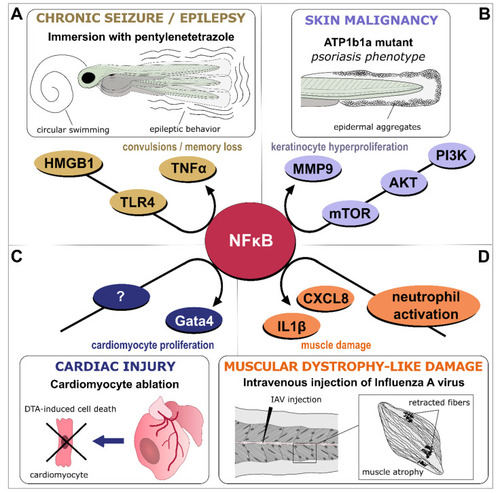Figure 3
- ID
- ZDB-FIG-230228-379
- Publication
- Leiba et al., 2023 - Molecular Actors of Inflammation and Their Signaling Pathways: Mechanistic Insights from Zebrafish
- Other Figures
- All Figure Page
- Back to All Figure Page
|
NFκB-dependent signaling as a central hub in inflammation. Various models of inflammatory-driven pathologies generated in larvae or adult zebrafish have identified NFκB signaling as part of the disease onset, progression, or recovery process. ( |

